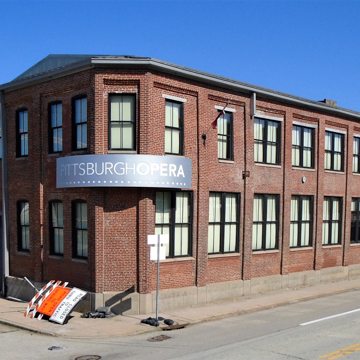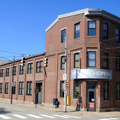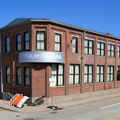You are here
2425 Liberty Avenue (Westinghouse Air-Brake Company)
This wooden-trussed, brick plant is a striking memorial to George Westinghouse, one of the nation's most important inventors. The legacy of Westinghouse—second in patent acquisition only to his rival Thomas Edison—has long been neglected in his adoptive city. Westinghouse came to Pittsburgh from upstate New York in the 1860s because it offered the industrial expertise, venture capital, and climate of aggressive entrepreneurship in which he could flourish.
Though Westinghouse branched out into switches and signals, electricity, turbines, appliances, natural gas, and even shock absorbers, the manufacture of railroad air-brakes was his first and central concern. It was for this enterprise that he supervised construction of this factory, an amalgam of three structures that eventually reached twenty-five bays in length and covered a full city block. In less than a decade, the plant proved too small for worldwide demand for his product. He then built a larger plant on the North Side in 1881, abandoning it nine years later to create a company town at Wilmerding ( AL59). This Liberty Avenue building now accommodates office spaces.
Writing Credits
If SAH Archipedia has been useful to you, please consider supporting it.
SAH Archipedia tells the story of the United States through its buildings, landscapes, and cities. This freely available resource empowers the public with authoritative knowledge that deepens their understanding and appreciation of the built environment. But the Society of Architectural Historians, which created SAH Archipedia with University of Virginia Press, needs your support to maintain the high-caliber research, writing, photography, cartography, editing, design, and programming that make SAH Archipedia a trusted online resource available to all who value the history of place, heritage tourism, and learning.


















